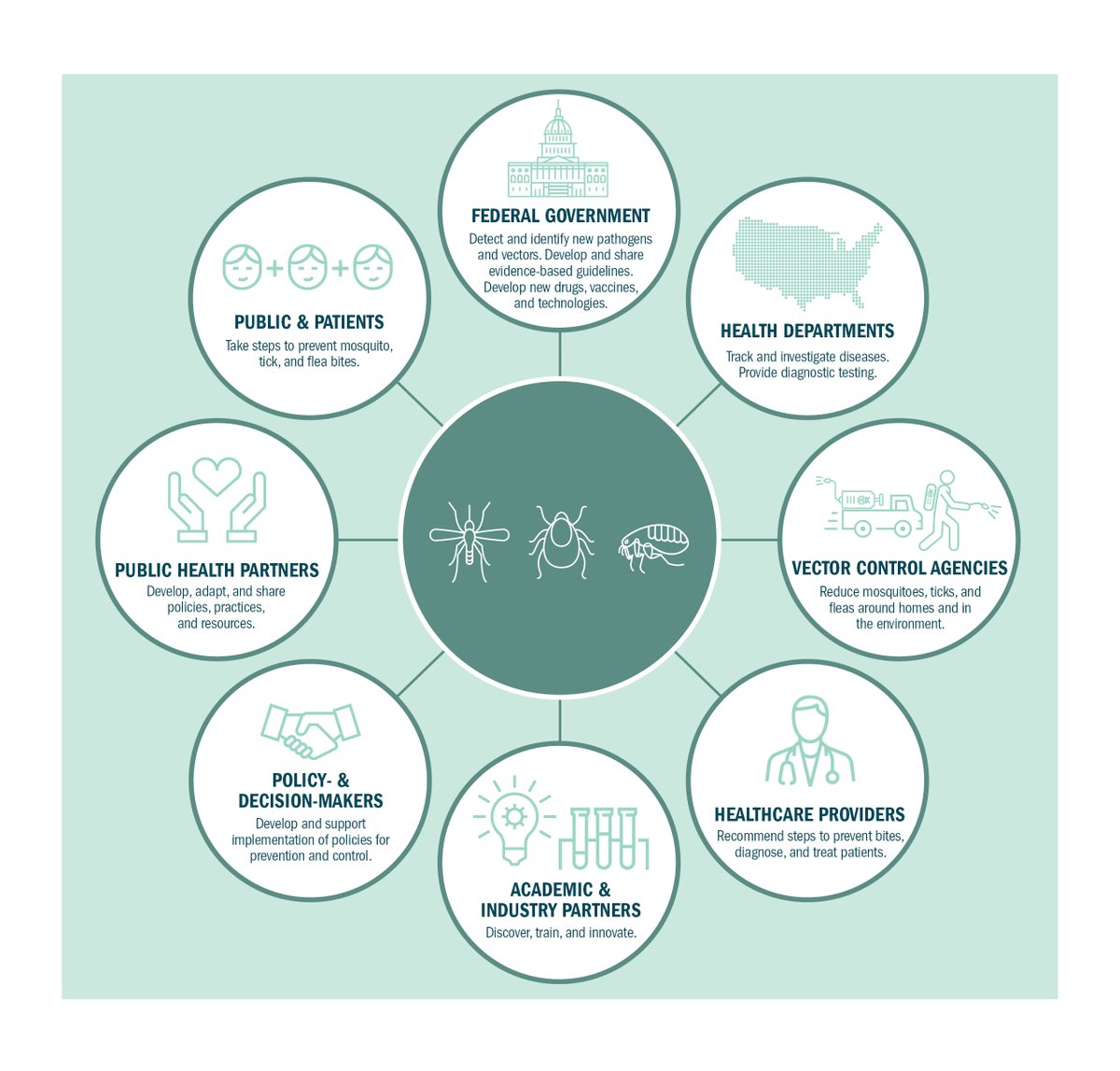In an encouraging development yesterday @CDC_NCEZID representative Ben Beard made an important announcement--a new "national strategy" for vector-borne diseases. I'll explain in a thread 1/n
lymedisease.org/framework-vect… via @Lymenews
lymedisease.org/framework-vect… via @Lymenews
The Kay Hagan Tick Act, passed in 2019, called for @hhs to develop a national strategy to address issues related to vector-borne diseases. The Lyme community fought hard for the passage of the #TICKact lymedisease.org/tick-act-appro… via @Lymenews 2/
The idea was for @HHSGov to co-ordinate with other federal agencies and departments, including the @CDCgov @EPA @US_FDA @NIH @DeptofDefense @USDA @USGS and others, to get everybody working towards the same goals. 3/ 

There are many challenges to prevention and control of vector-borne diseases including a lack of interconnected, quality data. There currently exists clinical, surveillance, environmental, animal/wildlife, and meteorological data that cannot easily be linked or shared. 4/
One of the things the Federal Tick-Borne Disease
Working Group has been working on since 2017 is to identify gaps & needs in the diagnosis, treatment and control of tick-borne diseases. 5/ hhs.gov/ash/advisory-c…
Working Group has been working on since 2017 is to identify gaps & needs in the diagnosis, treatment and control of tick-borne diseases. 5/ hhs.gov/ash/advisory-c…
This week the HHS releases “A National Public Health Framework for the Prevention and Control of Vector-Borne Diseases in Humans.” with the following 5 stated goals: 6/ 

I sat on the TBDWG sub-committee that worked hard to develop a nationwide tick control plan, something the U.S. has never had before. So, I’m particularly excited to see our concerns reflected in the new framework. 7/ 

You can read our report here: Tick Biology, Ecology, & Control Subcommittee Report to the TBDWG 8/ hhs.gov/ash/advisory-c…
I know many in the tick-borne disease community who will be happy to see they have also made improved diagnostics and treatment a priority. 8. 



The report actually addresses patients with chronic symptoms: "For bacterial, rickettsial, and parasitic diseases for which treatments do exist, people may still suffer ongoing symptoms, severe disease, and death. New treatment options may help reduce disease impacts." 9/ 

At the end of the #TBDWG15 meeting, Ben Beard went out of his way to personally thank patient representative Pat Smith @LymeDiseaseLDA and other members of the TBDWG for their contributions. 10/
I realize we've got a long way to go, but for me it’s gratifying to see these federal agencies coming together and recognizing the importance of tick-borne diseases and the TBDWG. Let’s hope the progress continues. /end
• • •
Missing some Tweet in this thread? You can try to
force a refresh









